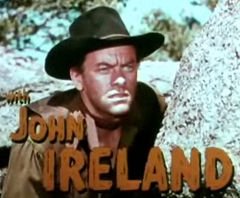Crows live in large, close-knit families and like social creatures; they not only hunt and forage together but also defend territories together. Crows will occupy almost any woodland, farmland, orchard or residential neighborhood as long as sufficient shelter and enough trees suitable for nesting are available. They seem to prefer lower elevations and moist places, including creeks, streams and lake shores.
Crows reach sexual maturity around 2 years of age though most do not breed until they are at least 4 years old. After mating, both members of a breeding pair help build the nest. Young birds from the previous year sometimes help as well. The nest is made primary of medium-sized twigs with an inner cup lined with pine needles, weeds, soft bark or animal hair.
Ravens
The Raven is a very large black bird with a thick neck, shaggy throat feathers, and a long, thick beak. In flight, ravens have a long, slightly wedge-shaped tail, long, broad, rather pointed wings with long thin “fingers” at the wingtip. They are about the size of hawks, growing to between 22 and 27 inches in length. The Raven is an acrobatic flier, and is often seen doing barrel rolls and somersaults in flight.
Ravens are scavengers and will eat almost anything including carrion, small animals, birds as large as Rock Pigeons and nestling Great Blue Herons, eggs, a variety of arthropods, fish, grains, buds and berries, and most types of human food including garbage. Ravens also eat fowl and their eggs, including chickens, ducks, guineas and geese. Ravens generally have few predators-eagles, hawks, owls and human hunters. Humans are the main predators.
A female raven will lay between 3-7 eggs in the nest and incubates them for about 18 days. The male and female will both tend to their young. Young leave the nest between 5 and 7 weeks of age. They sometimes disperse or may stay in the area where they were born. Sexual maturity is reached at about 3 years of age.
Ravens are very intelligent and are known to work in pairs to raid colonies of nesting seabirds; one bird distracts an incubating adult while the other grabs an egg or chick. They can make a wide variety of sounds ranging from low baritone croaks to high bell-like notes, and can even mimic the calls of other bird species. Their most common call is a long hoarse kraah. Ravens also have been to peck and destroy irrigation piping and drip lines resulting damage and preventing the flow of water to crops.
| BASIS OF COMPARISON | CROWS | RAVENS |
| Habitat | Crows will occupy almost any woodland, farmland, orchard or residential neighborhood as long as sufficient shelter and enough trees suitable for nesting are available. | Grasslands, beaches, forests, islands, sagebrush, deserts, mountains, tundra, ice floes and agriculture fields. |
| Size | A crow is about the size of a dove, with a body length of about 19 inches and weighs about 0.57 kg. | A raven is about the size of a hawk, measuring about 24-27 inches in length and weighs about 1.13 kg. |
| Bills | Crows have weaker bills that are smaller and mostly flat. | Ravens have black, larger, thicker, curved and more powerful beaks. |
| Feathers | The feathers of crows are less shiny and may have lighter markings. | The feathers of ravens are generally shiny with a wet sheen. |
| Throat Feathers | The crow has a smooth throat with relatively short feathers. | Ravens have shaggy feathers around the throat and above the beak. |
| Wings | Crows have straight wings that have very little blending along either the leading or trailing edge. | Raven’s wings are longer with a more visible crook at the wrist and the primary feathers are more splayed, showing more ‘’finger’’ space between them. |
| Tail | Crows have shorter tails with only a very slight curve showing when the tail is fanned in flight. | Ravens have longer tails and the feathers in the center of the tail are significantly longer, creating a distinctly pointed wedge, diamond or V-shaped. |
| In-Flight | In flight, crows are more energetic with frequent flaps. | In flight crows occasionally somersault and are more likely to soar and glide with only shallow, infrequent flaps. |
| In Flight Sound | In flight, the wings of crows are typically silent. | In flight wings of ravens may make a distinct swishing sound. |
| Sheen | In the right light conditions, the crow’s sheen appear greenish. | In the right light conditions, the Raven’s sheen is blue or purple. |
| Lifespan | Crows have a lifespan of up to 8 years. | Ravens have a lifespan of about 30 years. |
| Nature | Crows are gregarious birds that will travel in family flocks and use communal roosts, creating large groups of raucous birds. | Ravens are much more solitary or are found frequently in pairs, but very rarely in larger groups. |
| Diet | Crows only eat carrion on occasion, and their diet includes many other food items, including insects, mollusks, seeds, fruit, nuts, mice, eggs, nestlings of other birds and fish. | Ravens are scavengers and will eat almost anything including carrion, small animals, birds as large as Pigeons, eggs, a variety of arthropods, fish, grains, buds and berries, and most types of human food including garbage. |
| Call | Crows makes a typical ‘’caw-caw’’ call. | Common ravens have a much coarse, rattling call that that sounds like a long, slow croaking ‘’grooonk’’ tone. |
- 1 (12-ounce) package refrigerated biscuits (10 biscuits)
- 1/2 cup pizza sauce, divided
- 1/3 cup refrigerated cooked crumbled sausage
- 1/2 cup shredded mozzarella cheese
- Grated Parmesan cheese, for sprinkling
- Cooking spray
- Preheat oven to 375º. Coat a baking sheet with cooking spray.
- Separate biscuit dough into 10 pieces. Make an indentation in the center of each biscuit with your thumb. Spoon a teaspoon of sauce into each indentation. Top evenly with crumbled sausage and mozzarella cheese and sprinkle with Parmesan cheese.
- Pull dough over filling and pinch together firmly so that filling is completely enclosed. Place seam side down on prepared baking sheet. Lightly spray tops with cooking spray and sprinkle with more Parmesan cheese.
- Bake 10 to 12 minutes, or until golden. Serve warm with remaining pizza sauce.





















